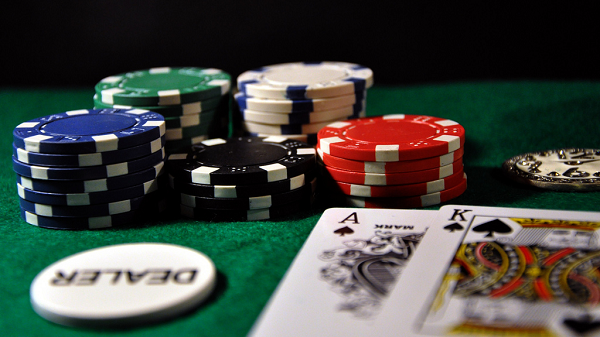Bluffing is probably the one thing that most people know about poker. If you know nothing else about the game, you know that bluffing is a part of the game’s strategy.
Bluffing has been glamorized by the media. The value of bluffing in poker is greatly exaggerated, mostly because it’s fun to talk about. Most newcomers bluff either way too much or ignore bluffing altogether.
This guide is designed to get you up to speed on the basics of how to bluff at the poker table.
New to Poker? Don’t Bluff at All
The main reason newcomers shouldn’t bluff is that they probably have no idea what the likelihood is that an opponent will fold. Learning that takes time and experience and (in my case) more than a few busted bluffs. Until you’ve put in the time and effort to learn how to calculate folding odds, you have no business bluffing.
But there’s one caveat. I firmly believe that the semi-bluff is an important exercise for poker newcomers. It’s not smart for a novice to bluff even a single opponent UNLESS they have a good enough hand to back it up. That’s a classic semi-bluff.
Bluff vs. Semi-Bluff
What is a bluff?
According to the Oxford English Dictionary, it’s “an attempt to deceive someone into believing that one can or will do something.” That’s close to the definition in a poker game, but it needs a little adjustment. In poker terms, a bluff is a bet or raise made with a hand that you don’t expect to win with.
There’s another kind of bluff that’s important for beginners – the semi-bluff. Since a bluff is a deception based on holding a bad hand, a semi-bluff is a deception based on a hand that isn’t actually all that bad. The semi-bluff is an important tool for beginners, since it gives you an out in case the bluff doesn’t work.
Here’s an example of a semi-bluff:
Let’s say you’re holding an outside straight draw. In real-world terms, that means you’ve got nothing. But, if you’ve got two cards to come, you can win one of two ways. Either your opponent(s) will fold OR you’ll get your cards and win outright. If your bluff fails and the other player doesn’t fold, you’ve still got a decent hand.
Never Bluff More than 1 or 2 Players
Consider, for example, that you should have a running calculation in your head of a player’s folding odds compared to the number of players in the bet. If you’re facing four opponents, the odds of you forcing all four of them to fold is really slim.
Even if all four of them had a 50% chance of folding, you have about a 6% chance of getting all four to leave the game. Facing that many opponents, bluffing is probably not a smart move. If you bluff, keep it to just one or two opponents.
Know When to Bluff
If I had it my way, I’d only bluff when my opponent was likely to fold. Wouldn’t we all? Bluffing an opponent who has no intention of folding is a waste of energy and a “tell” all its own.
Still, the rule applies – you should bluff when you have an inkling that your opponent is likely to fold. Maybe you’ve noticed she doesn’t stand up to intimidation at all, so you know you can just bully her into folding. Here are some other situations that call for a bluff:
When you’re in last position. In this position you can sit back and watch all your opponents. If they’re all making weak moves, like when the table checks to you, you’re in the perfect position for a bluff.
If you raised pre-flop. Let’s say you raised pre-flop and you missed on the flop. A bluff now, while more difficult than others on this list, could be really successful. Using a continuation bet, you’ll force everyone out that doesn’t have a top pair. This is another decent time for a semi-bluff.
Against small-stacked opponents. Think about your own playing style – how do you act when you have a small stack? A small-stacked opponent is unlikely to call a raise unless they’ve really hit the flop. This takes a little doing, because some small-stacked opponents will fold less. It’s all about observing the behavior and style of the other players.
When on the draw. This basically refers to the semi-bluff we described above, where you’re on the draw to a straight but you have an opponent you’d like to force to a flush instead of waiting for your out. This is technically a semi-bluff, but it’s still the perfect time try your hand at bluffing.
Conclusion
This needs to be said – you DO NOT have to bluff to win playing poker. It’s not the kind of skill you’ll use often enough to warrant more than a few hundred words on the subject. Besides, it’s mostly learned through experience. You can’t learn all that much about the art of bluffing by reading a blog post. It’s up to you to put the tips above into practice.
Remember – if you’re new to the game, you should just play good old-fashioned ABC poker, sticking to good hands played properly instead of sly bluffing. Until you know how to gauge an opponent’s likelihood of bluffing, you have no business doing it.

 MENU
MENU















